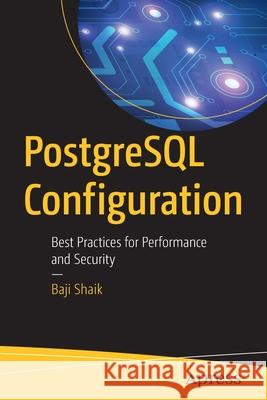PostgreSQL Configuration: Best Practices for Performance and Security » książka
topmenu
PostgreSQL Configuration: Best Practices for Performance and Security
ISBN-13: 9781484256626 / Angielski / Miękka / 2020 / 226 str.
Kategorie:
Kategorie BISAC:
Wydawca:
Apress
Język:
Angielski
ISBN-13:
9781484256626
Rok wydania:
2020
Ilość stron:
226
Waga:
0.35 kg
Wymiary:
23.39 x 15.6 x 1.32
Oprawa:
Miękka
Wolumenów:
01
Dodatkowe informacje:
Wydanie ilustrowane











